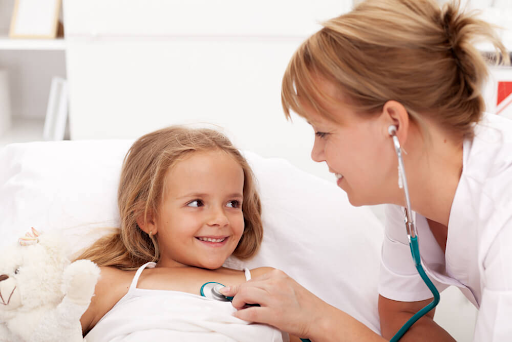Childcare Safety Training: Essential Steps for Safer Care
Every parent entrusts childcare providers with what they value most—their children. But how can you be sure those looking after young ones are equipped to handle emergencies, prevent accidents, and create a safe environment? Childcare safety training isn’t just a box-ticking exercise; it’s a vital foundation for protecting children and ensuring peace of mind for families.
Whether you’re a childcare professional or a concerned parent, understanding the importance of proper safety training is key. It’s about more than policies and procedures—it’s about fostering confidence, competence, and a culture of care. In a field where even small oversights can have serious consequences, the right training makes all the difference.
Necessity of Childcare Safety Training
Childcare safety training plays a critical role in maintaining a secure environment for children under your care. Your actions can significantly influence their physical health, emotional well-being, and development. Children depend on you to identify risks and respond effectively. Through proper training, you will find that creating a safer space becomes second nature, allowing you to handle challenges confidently.
You might encounter daily situations requiring quick decisions. For instance, recognising choking hazards, managing food allergies, or performing proper first aid procedures demands precise knowledge and skills. Training equips you with these tools, enabling you to react swiftly and correctly in emergencies. Without this, even minor issues might escalate unexpectedly.
In the case that you’re working in a group setting, understanding safety principles ensures consistent standards among all caregivers. Everyone benefits when your team follows uniform protocols for emergencies, hygiene, and monitoring behaviours. Training actively reduces missteps caused by uncertainty or gaps in awareness.
Parents place immense trust in your ability to safeguard their children. Through comprehensive childcare safety knowledge, you reassure them that their children are cared for responsibly and attentively. This trust builds stronger relationships, enhancing the overall reputation of your childcare services.
Training also supports proactive risk management. Identifying hazards before they become problems establishes preventive measures, protecting you and the children. For example, understanding how to mitigate the risks of outdoor play equipment can prevent accidents. Consistently applying these practices highlights your commitment to maintaining a safe learning environment.
Your professional development benefits significantly too. Safety training reinforces your competence and demonstrates a level of expertise that sets you apart. Organisations prioritising regular training ensure their staff remain prepared to adapt to changing regulations and new challenges.
Ultimately, you will notice how training fosters a collective sense of responsibility. When every caregiver shares knowledge of childcare safety practices, the environment is organised, vigilant, and supportive. Maintaining this level of preparedness protects everyone’s interests, ensuring children thrive without undue risk.
Key Components Of Childcare Safety Training
Childcare safety training equips you with essential knowledge and the confidence to act decisively. Its framework ensures a secure and nurturing environment for all children under your care.
Emergency Preparedness
Understanding readiness for emergencies helps mitigate risks. You will find that training in fire evacuation procedures, lockdown drills, and emergency contacts ensures you act quickly during critical incidents. Familiarity with site-specific protocols, like exit routes and emergency numbers, strengthens your ability to safeguard children. When practising evacuation plans, you might notice gaps that, if addressed, prevent delays. Consistent reviews of these plans across staff support collective readiness and reduce confusion during unplanned events.
First Aid And CPR
Paediatric first aid and CPR save lives when situations demand swift, accurate action. Training in these areas prepares you to tackle injuries, allergic reactions, or respiratory challenges immediately. You can learn proper techniques for different age groups, as methods for infants differ from older children. By mastering CPR and knowing how to treat common incidents like cuts or burns, you reinforce your response capabilities. Regular refreshers ensure your approach remains sharp and compliant with health standards.
Childproofing Techniques
Childproofing eliminates hazards and lowers the chance of accidents within learning spaces. You’ll understand how to inspect rooms, identifying choking dangers like small toys or loose cords. Adjusting furniture placement and securing heavy items minimise falling risks. In cases where children interact frequently with electrical appliances, protective covers and strategic placement keep them safe. Routine checks of these measures prevent overlooked hazards from posing threats over time.
Benefits For Childcare Providers And Children
Childcare safety training brings multiple advantages, shaping both capable providers and a safe foundation for children. You’ll see its impact in everyday actions, fostering confidence and delivering safer outcomes.
Enhanced Confidence And Skills
You’ll develop sharper instincts and better judgement through training. Responding to emergencies like choking or first aid situations becomes second nature when you understand effective techniques. A deeper grasp of child development helps you tailor interactions, encourage trust, and maintain structure. Practical learning equips you to recognise risks early and act swiftly under pressure. This enables you to support each child’s unique needs while coordinating seamlessly with other staff. Over time, you might notice stronger engagement and a clearer workflow in your caregiving routine.
Safer Environment For Children
Children thrive in secure surroundings where risks are minimal and care is attentive. Safety training prepares you to identify hidden hazards, whether it’s unsafe toys or improperly stored materials. By applying preventive measures like childproofing, you reduce potential injuries. You may learn to approach food allergies with precision, ensuring meal safety while practising vigilance during group activities. This consistent attentiveness creates a stable atmosphere where children feel protected and supported. You will find that safety protocols contribute significantly to positive development and reduced stress in childcare settings.
Certifications And Training Programs
Providing childcare safely requires targeted certifications and structured programmes that address critical knowledge areas. You will find that these offer specialised training to build your expertise and ensure compliance with regional regulations.
Types Of Available Certifications
Several certifications focus on fundamental aspects of childcare safety. Basic first aid and paediatric CPR certifications might improve your response in emergencies like choking or injuries. Programmes in fire safety, such as evacuation protocol training, often address environmental hazards. Certifications in safeguarding procedures guide you through recognising child abuse, reporting concerns and understanding child protection laws. You can also explore food safety training to manage allergens and maintain hygienic meal preparation environments.
How To Choose The Right Program
Selecting the most suitable training depends on specific factors. Assess your responsibilities. If you oversee infants, paediatric first aid could be crucial. Those managing larger groups might value courses on risk management or behavioural safety. Verify programme accreditations to ensure recognised standards. Look carefully at the curriculum for relevance to your setting. Providers with flexible schedules and ongoing support may offer the practical balance you need.
To Conclude
Childcare safety training is an essential investment in the well-being of both children and caregivers. By equipping yourself with the right skills and knowledge, you create a secure and nurturing environment where children can thrive. Prioritising comprehensive training not only enhances your professional competence but also strengthens trust with parents and colleagues.
Staying proactive with regular training ensures you’re prepared to handle challenges effectively and maintain high standards of care. Ultimately, your commitment to safety fosters a culture of vigilance and responsibility, laying the foundation for positive growth and development in every child under your care.




